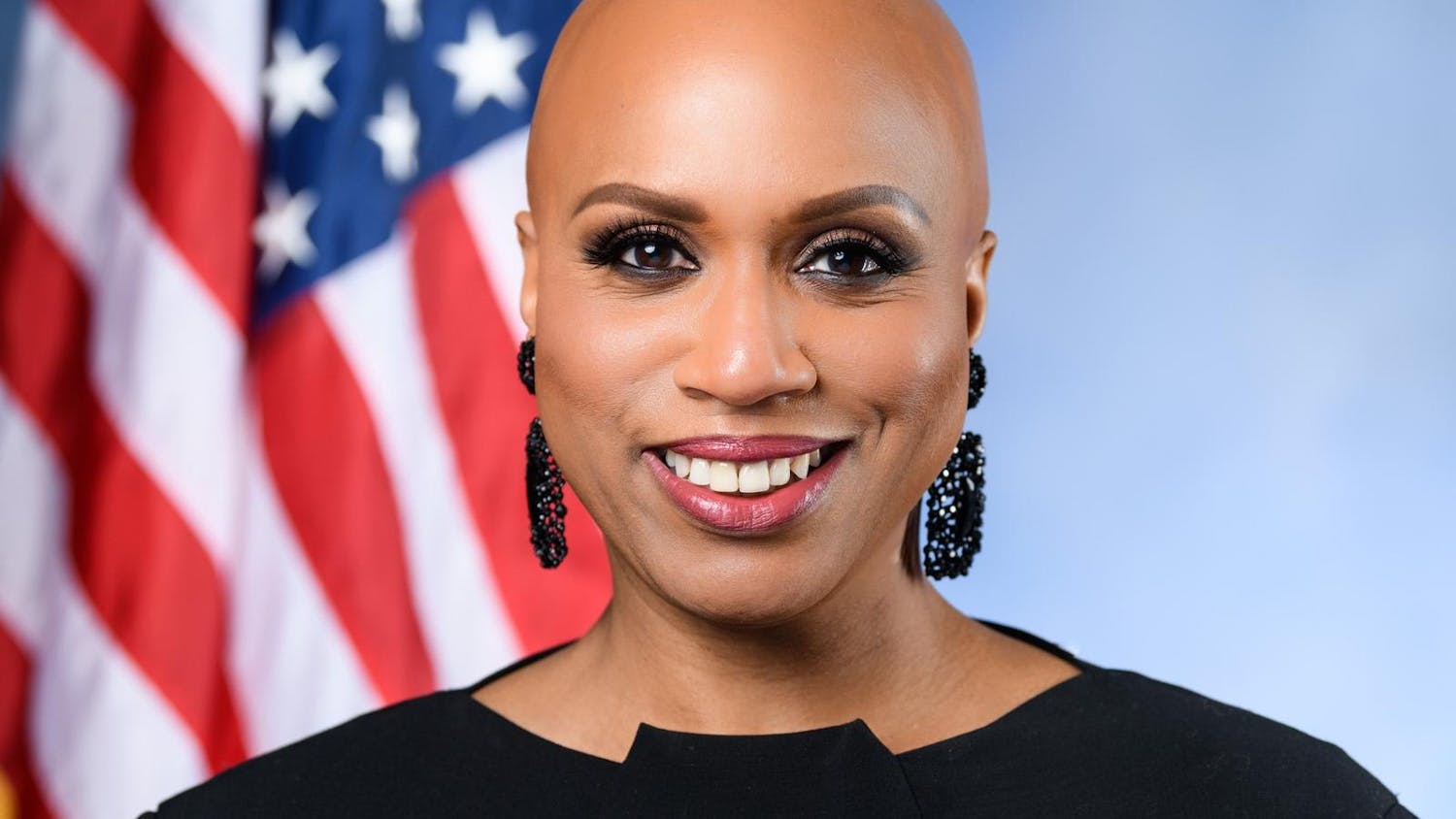Lines outside the doors of the Sharpe Refectory have become a new normal since the dining hall’s transition from offering preselected meals to a new “build your own” model, which offers students more variety.
The change was prompted by student feedback requesting more “autonomy” over selections and “variety and increased portion sizes,” wrote George Barboza, director of dining programs, and Jessie Curran, assistant director of wellness and nutrition in an email to The Herald.
Gabe Merkel ’23.5 gets most of his meals from the Ratty, going about 15 times per week. Though Merkel believed “there’s a lot of upside” to the changes at the Ratty, he preferred the old system.
“You can get more food if you need more food, and you can mix and match in a way you couldn’t beforehand,” Merkel said. “But it just comes with this massive tradeoff where you now have to spend 25 minutes of your time waiting in line to get the same food that you got before.”
Merkel usually waits between 15 and 25 minutes from the time he enters the Ratty to the time he leaves — time that Merkel could otherwise use to do work or see his friends.
“It would be made less annoying if there were other options,” Merkel said. “But the GET app doesn't really allow you to book anything past a certain time because all the slots fill up pretty quickly. You end up forced to go to the Ratty and wait in line, which, first, feels a little inconvenient if you have a lot of work and, second, feels like a waste of time.”
Matthew Stephens ’23 also had to adjust to the longer lines at the Ratty, where he gets dinner every day, by going earlier or later than peak times to circumvent the wait. Despite re-arranging his schedule, Stephens still was not able to avoid the longer wait one day and had to return to his dorm without getting dinner because he had “so much work to do.”
Like Merkel, Stephens believes the negatives of the new system outweigh the positives. “As someone who works a lot, as so many other students do at Brown, and as someone who doesn’t have very strict dietary restrictions, I would personally prefer time and efficiency,” Stephens said. “I completely understand someone who was a very strict vegan and was dairy free wanting to have more options for them, but in terms of my schedule, I think the tradeoff is not really worth it.”
The express line has been one way students have bypassed the longer lines. Curran and Barboza described the express line as a way “for students who are in a hurry and want to build a meal in a flash” to pick up preselected meals, which can be reviewed ahead of time on the dining website.
Eshaan Mangat ’24 gets at least one meal from the Ratty five days a week and spends about 30 minutes waiting in line. Mangat believed better utilization of the express line could be key to reducing the length of the lines and wait times.
“What I think the University should do is make a super distinct regular and express line,” Mangat said. “Because to get into the Ratty itself, that’s where the clog is happening.”
Curran and Barboza wrote that the express line has led to “substantial decreases in lines” and that “for most part, students’ wait times have been cut drastically.”
“We are, however, keeping this top of mind and are in the process of planning for the implementation of a second parallel line in the Refectory,” Curran and Barboza wrote. “With this we could serve double the number of students at the same time. We are again consulting with the Brown Office of Environmental Health and Safety and the RI Department of Health to ensure staff and students safety.”
The longer lines have created some COVID-related concerns due to the increased number of people in the Ratty at a time. Though Merkel believed most students were responsible when waiting in line, he acknowledged the lines came with a greater risk.
“It is somewhat frustrating that they implemented this system right when cases started to go up because ... it requires us to be inside in close contact for much longer than it did before,” Merkel said.
Brown Dining Services implemented safety measures, such as six foot high plexiglass, after consulting with the Brown Office of Environmental Health and Safety and RIDOH. Floor decals and signs indicating proper social distancing are placed around the Ratty in addition to the three healthy ambassadors who remind students to keep their distance.
Merkel said that the early closing times of dining halls — which close at 8:30 p.m. at the latest — can pose a more indirect COVID-19 risk, forcing students to go off campus for food and in turn increasing potential exposure.
Though Mangat also favored the Ratty’s previous pick-up system, he believed “Brown (has) been pretty good with listening to students” and was hopeful “they (would) do something to alleviate some of this.”
Merkel agreed, remembering the longer lines in the first few days of Quiet Period, which were quickly corrected.
“People in the kitchen really do want us to have the best dining experience possible,” Merkel said. “I think they probably are working hard to figure out ways to decrease the length of the line and make sure we can get our food faster with the same amount of options.”

ADVERTISEMENT




